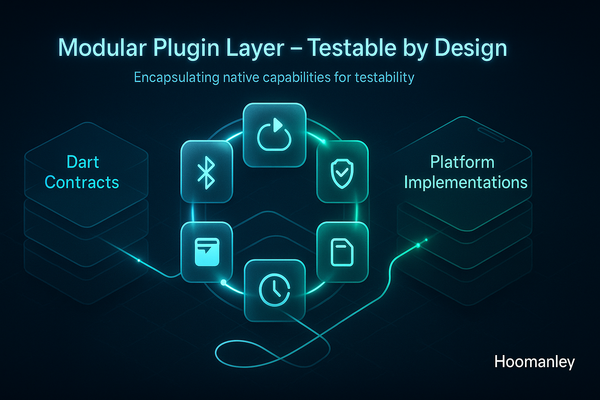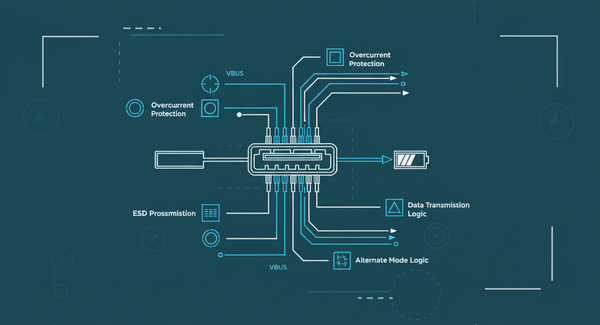Understanding GraphQL and Building Real-Time Apps with AWS AppSync

Introduction
If you’ve ever used apps like WhatsApp, Slack, or Google Docs, you’ve experienced real-time data in action — messages appear instantly, updates sync automatically, and everything feels seamless.
Behind many such systems lies GraphQL, a modern way to handle APIs, and services like AWS AppSync that bring it to life at scale.
In this post, we’ll go from understanding GraphQL basics to building a real-time feature in Flutter using AWS AppSync, complete with connection lifecycle handling.
What Is GraphQL?
GraphQL (created by Facebook in 2012) is a query language for APIs that allows clients (like mobile apps or web apps) to request exactly the data they need — nothing more, nothing less.
Imagine you’re ordering food:
- With REST, you get a fixed combo meal (extra fries you didn’t ask for).
- With GraphQL, you build your own meal, choosing exactly what you want.
Example
Instead of hitting different REST endpoints:
GET /user/123
GET /user/123/posts
GET /user/123/followers
You can make one GraphQL request:
{
user(id: "123") {
name
posts { title }
followers { username }
}
}
GraphQL returns exactly this shape — one network call, zero wasted data.
GraphQL vs REST: A Quick Comparison
| Feature | REST API | GraphQL API |
|---|---|---|
| Endpoints | Multiple (/user, /posts, /comments) |
Single (/graphql) |
| Data Fetching | Fixed per endpoint | Flexible — client defines fields |
| Overfetching / Underfetching | Common | Eliminated |
| Real-time Updates | Needs custom setup | Built-in via subscriptions |
| ** Versioning** | v1, v2, etc. |
No versioning — evolves with schema. |
| Documentation | Manual | Auto-generated (introspection) |
In short:
GraphQL is faster, smarter, and more flexible — especially for apps with nested data or real-time updates.
How GraphQL Works
GraphQL has three core operations:
| Operation | Purpose | Example |
|---|---|---|
| Query | Fetch data | Get user info or posts |
| Mutation | Modify data | Create or update records |
| Subscription | Listen for live updates | Receive new chat messages instantly |
Each operation interacts with a GraphQL schema, which defines the types and fields available.
Example schema:
type ChatMessage {
id: ID!
receiverUsername: String!
content: AWSJSON!
createdAt: AWSDateTime!
modifiedAt: AWSDateTime!
}
type Mutation {
createChatMessage(receiverUsername: String!, content: AWSJSON!): ChatMessage!
}
type Subscription {
onCreateChatMessage(receiverUsername: String!): ChatMessage!
}
Why AWS AppSync?
AWS AppSync is a managed GraphQL service by AWS that handles:
- Hosting and scaling your API
- Managing WebSocket connections for real-time data
- Authenticating users via API keys, Cognito, or IAM
- Integrating with DynamoDB, Aurora, Lambda, or Elasticsearch
In short: AppSync = GraphQL + Real-time + AWS power.
You focus on business logic, not server maintenance.
Real-Life Example: Real-Time Chat
Let’s say you’re building a chat app.
You want:
- Users to send messages → Mutation
- Other users to receive them instantly → Subscription
- The chat list to update in real-time → WebSocket-based connection
This is a perfect case for GraphQL + AppSync.
Mutation — Send a message
mutation CreateChatMessage(
$receiverUsername: String!,
$content: AWSJSON!
) {
createChatMessage(
receiverUsername: $receiverUsername,
content: $content
) {
id
receiverUsername
content
createdAt
}
}
This sends your message to the backend.
Subscription — Receive messages live
subscription OnCreateChatMessage($receiverUsername: String!) {
onCreateChatMessage(receiverUsername: $receiverUsername) {
id
receiverUsername
content
createdAt
}
}
With AppSync, this runs over a WebSocket connection, so your Flutter app gets messages instantly — no refresh needed.
Connection Lifecycle: Making It Production-Ready
A real-time connection isn’t just “connect once.”
It needs lifecycle awareness — connect, reconnect, clean up, and survive app state changes.
Here’s what happens:
| App State | Action |
|---|---|
| Foreground (Active) | Connect to AppSync, start subscriptions |
| Background (Paused) | Stop heartbeat, close WebSocket |
| Resumed | Reconnect and resubscribe |
| Terminated | Clean up |
| Network lost | Retry with exponential backoff |
Diagram: The Real-Time Lifecycle
[App Start] → Connect WebSocket → connection_init → connection_ack
↓
Subscribe to Events
↓
[onCreateChatMessage]
↓
Receive Data → Update UI
↓
[App Paused] → Close Connection
↓
[App Resumed] → Reconnect + Resubscribe
When Should You Use GraphQL + AppSync?
Use it for:
- Real-time features (chat, notifications, dashboards)
- Mobile apps that need efficient network usage
- Multi-platform systems (Flutter, React, iOS, Android)
- Complex data graphs (nested relations)
Avoid it for:
- Simple CRUD apps
- Backend-heavy systems without real-time needs
- When your team is already optimized for REST
Summary
- GraphQL lets you fetch exactly the data you need
- AppSync adds real-time power with subscriptions
- Flutter +
web_socket_channel= a clean, reactive client - Handle app lifecycle (pause/resume) and reconnect logic
- Generate models for type safety
- Use it for chats, dashboards, and live content apps
Conclusion
GraphQL changes the way apps talk to APIs — it’s more flexible, more powerful, and fits perfectly with modern mobile needs.
With AWS AppSync, you get scalability, real-time updates, and AWS reliability out of the box.
You can create truly reactive, always-synced experiences — whether it’s for chats, IoT dashboards, or live analytics.




